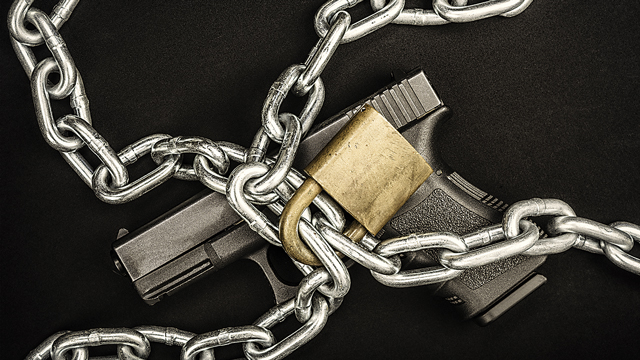One-third of households with children have a gun in the home, many of which are not stored safely. The American Academy of Pediatrics estimates that approximately 4.6 million children in the United States are living with unlocked, loaded firearms – a staggering and dangerous statistic.
Kids are curious by nature. If they see a gun, they’re likely to want to touch it – or worse, play with it. Unfortunately, over the past four years, we’ve seen an increase in the number of children coming into the hospital with gunshot wounds because guns in the home weren’t stored safely.
The good news is adults can take actions to turn these statistics around.
What does safe gun storage look like?
A change to Virginia law last summer makes it a Class 1 misdemeanor to “recklessly have a loaded, unsecured firearm” that could “endanger the life or limb” of a child under age fourteen.
Safe storage of both guns and ammunition is essential. This means gun owners must:
• Keep guns out of the reach and sight of children.
• Store guns unloaded and secured with effective, child-resistant locks.
• Store ammunition in a separate, locked container, out of the reach and sight of children.
When a gun is not being stored, keep it in your immediate possession and control at all times. Even BB and pellet guns can cause significant injuries, particularly when fired at the abdomen or head.
Ask the important questions.
Beyond your own home, consider the other homes your kids may visit – those of friends, neighbors, or relatives. It’s likely that one or more of those homes contains a gun or guns.
All parents and guardians need to be comfortable asking if there are guns in the homes their children visit and, if so, whether the guns and ammunition are safely locked and stored. As parents, we often ask questions when our kids are going to play or stay somewhere: Will an adult be home? Does my child need sunscreen or a bike helmet? It’s not about whether gun ownership is right or wrong. It’s a matter of ensuring our children are safe.
Here are some suggestions for starting the conversation:
“I hope you don’t mind me asking a few questions about the kids’ safety…”
“I heard the most surprising statistic about kids and guns…”
“I’m not judging anything. I just want to be sure my child is safe…”
“We all know how curious kids can be…”
“I just read an interesting article about gun safety in Richmond Family Magazine…”
If the answer is, “No, we don’t have any guns,” you have one less thing to worry about. If the answer is “yes,” confirm that all guns are stored unloaded and locked, ideally in a gun safe, with ammunition locked separately. If you have any doubts about safety, have the children play at your home instead.
Talk to your children about gun safety.
When your children are mature enough to understand – and as early as possible – talk with them about guns. Make sure they understand the seriousness of guns and know what to do if they see one:
1. Don’t touch it.
2. Tell an adult right away.
Research has shown that young kids can’t tell the difference between a real gun and a toy. Older kids usually know the difference, but they may be tempted to touch or hold a gun when no one’s around. Both situations underscore the necessity of safe storage. Children cannot and should not be responsible for their safety when guns are concerned. The onus is always on the adult to properly store guns and ammunition.
Leaving guns unsecured is a recipe for tragedy. Let’s all work together to keep kids – and adults – safe.




